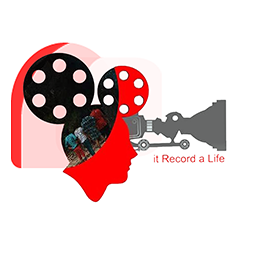let’s craft your future – empowering talent
Bahria Town Islamabad Pakistan
admin@cfstudio.pk
[Monday to Friday | 9:00 AM – 6:00 PM]
send a message
Head Office
101 Main Street, Queens, New York,
United States - 11435
frequently asked questions
We utilize a variety of collaboration tools designed to streamline feedback and ensure seamless communication during the video editing process. Key tools include:
- Frame.io: Allows clients to leave frame-specific comments and annotations directly on the video timeline.
- Vimeo Review: Offers similar timestamped feedback options, easy sharing, and version control.
- Google Docs/Sheets: Ideal for collaborative script edits, shot lists, and organized feedback logs.
- Trello or Notion: Used to manage revision rounds, deadlines, and tasks in a visual workflow.
These tools not only enhance clarity in communication but also speed up the revision cycle, ensuring high-quality output and timely delivery.
Yes. Editors can blur faces, license plates, logos, or any other sensitive information to protect privacy or adhere to copyright and publishiCan you blur faces or sensitive content in a video?
ng standards.
Yes. Editors can design and animate charts, graphs, and data points to present statistics in a visually compelling way. These are especially useful in reports, pitch decks, and educational videos.
- YouTube: 16:9 (landscape)
- Instagram feed: 1:1 or 4:5
- Instagram Reels/TikTok: 9:16 (vertical)
- The editor will tailor your video dimensions accordingly.
Yes. Text overlays and lower thirds help convey information like names, locations, or topics. Editors can design custom styles to match your branding or use templates for fast delivery.
Definitely. Editors can source suitable background music, sync it with your video, and adjust levels to ensure the dialogue and music blend well without overpowering each other.
A cut is a direct shift from one clip to another, while transitions (like fades, wipes, or dissolves) smooth or stylize this change. Cuts are typically used for speed and clarity, whereas transitions can add emotional or visual depth.
Yes. Kinetic typography is animated text that visually emphasizes spoken words or key points. It’s often used in explainer videos, promos, or music videos to enhance engagement and readability.
It depends on the platform: Instagram Stories and TikTok prefer 1080×1920 (vertical), Facebook and YouTube prefer 1920×1080 (horizontal). Editors optimize videos for the right specs.
Yes. Looping videos are great for background displays or social media. Editors can create seamless loops that replay smoothly.
Editors use templates, consistent branding (fonts, colors, logos), music, and pacing to maintain uniformity across video series. A project brief and style guide help with this.
Common frame rates include 24fps (cinematic), 30fps (standard for web), and 60fps (smooth motion). The choice depends on your platform and visual preference. Editors will guide you accordingly.
Absolutely. Slideshows, promos, and explainer videos can be made using images, text, transitions, and background music to create compelling visual stories.
Yes. Editors can replace green screen backgrounds with custom visuals using chroma key techniques. This is popular for interviews, tutorials, and virtual environments.
LUTs (Look-Up Tables) are preset color profiles that give videos specific looks, like a cinematic or vintage style. Editors use LUTs for quick color grading and to maintain consistency across scenes.
Yes. Multi-camera editing involves syncing and switching between footage from multiple cameras to offer different angles. It’s commonly used for interviews, events, and performances.
Linear editing is done sequentially, like cutting film in the order it’s viewed. Non-linear editing, used in modern software, allows you to access and manipulate any part of the footage at any time, offering greater flexibility.
Yes. Many editors specialize in adding visual effects, from simple enhancements like light leaks and screen glitches to advanced CGI and compositing. VFX can make your video more cinematic and engaging.
Typically, yes—once payment is completed, the client owns the final video. However, terms may vary depending on the editor’s policy. Always clarify ownership rights and licensing before the project begins.
You can use file transfer services like WeTransfer, Google Drive, Dropbox, or Frame.io. Always ensure your internet connection is stable and organize your files clearly for smoother collaboration.



